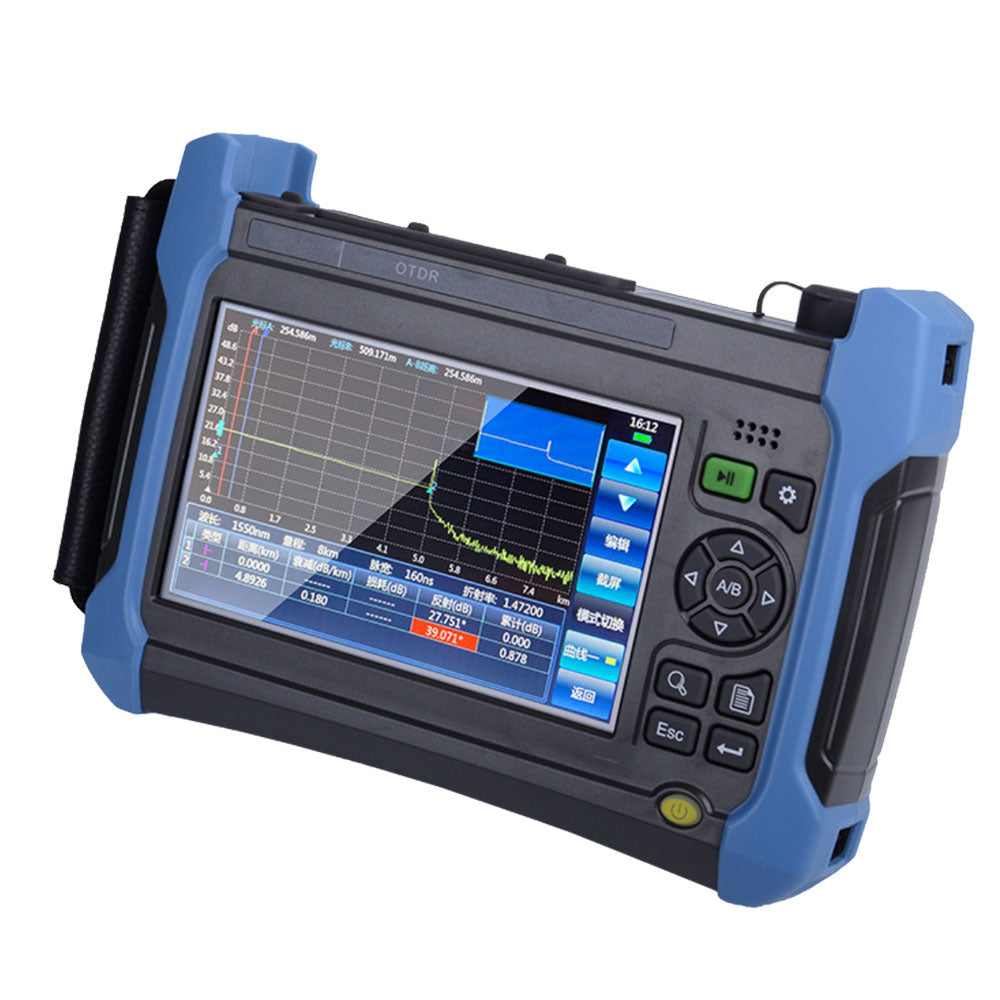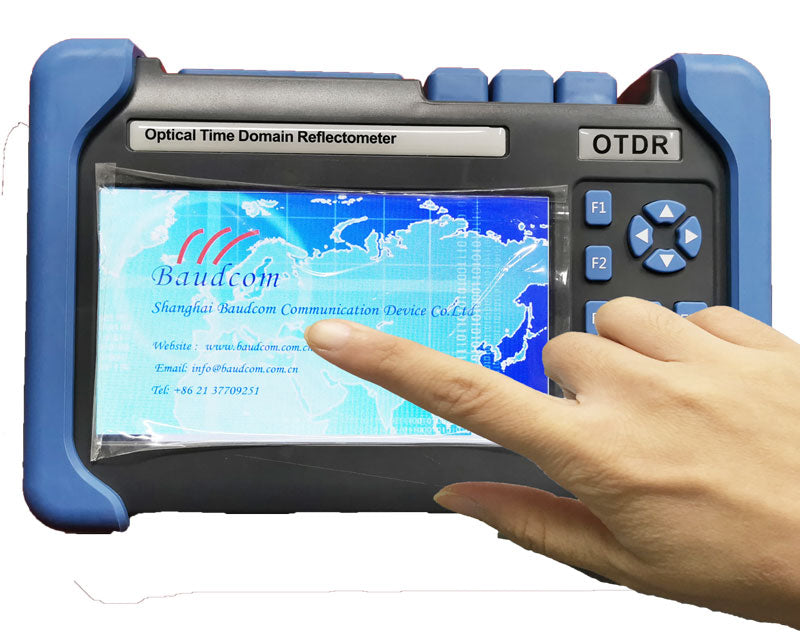OTDR stands for an optical time-domain reflectometer. It is an instrument used to test an optical fiber. This equipment works by injecting a series of optical pulses into the fiber and extracts, from the same end, the light that is scattered (Rayleigh back scatter) or reflected back (Fresnel reflections) from points along the fiber. This technology uses the scattered or reflected light that is gathered to portray the optical fiber.

The Benefits of an OTDR
This equipment can locate defects and faults, and can also determine the amount of signal loss at any point in a fiber optic run.
An OTDR machine only needs to have access to one end of a fiber to make their measurements.
This technology allows the machine to take thousands of measurements along a fiber. Using this it shows a snapshot of the cable run that is displayed on the screen as a line sloping down from left to right, showing distance on the horizontal line and signal level on the vertical line.
OTDR machines are widely used in all phases of a fiber system’s life from installation, maintenance, fault locating to restoration. If you are installing an outside plant network you will want an OTDR to check that the slices along the run and that the fiber itself is good. OTDR machines locate splices after they are made and confirm the performance of the joint.
An OTDR can also find any stress fractures in the cables caused by improper handlings, such as exceeding the bend radius, during installation. If you are doing any restoration because a cable has been cut, an OTDR will help find where it has been cut and assist to confirm the quality of the splice after restoration. On single-mode fibers where connector reflections are of a concern, an OTDR will pinpoint any issue very easily.

OTDR Symbol Meanings
An OTDR contains a laser diode source, a photodiode detector and a highly accurate timing circuit (or time base). The laser emits a pulse of light at a specific wavelength, this pulse of light travels along the fiber being tested, as the pulse moves down the fiber portions of the transmitted light are reflected/refracted or scattered back down the fiber to the photo detector in the OTDR. The intensity of this returning light and the time taken for it to arrive back at the detector tells us the loss value (insertion and reflection), type and location of an event in the fiber link.
Where to Use an OTDR?
There seem to be a lot of confusion about where and how to properly use an OTDR. Given the two distinctly different fiber optic applications—outside plant (OSP) cabling and premises cabling, the functions of OTDR varies in different situation: In a long outside-plant cable with many splices, the OTDR is indispensable and often used to ensure the cable has not been damaged during installation and that each splice is properly made. And it is used for troubleshooting problems, such as finding locations of cable breaks. Premises cabling has short cable runs and almost never includes splices, so OTDR is poised as an alternative to insertion-loss testing with a light source and power meter—with OTDR price roughly 10 times higher than those fiber testers.
Conclusion
OTDR are invaluable test instruments that can locate problems and fault in your optical fiber links, ensuring a reliable and sound network performance. Once you’re familiar with OTDR function and how to use it properly, you’ll be prepared to detect and eliminate your optical fiber events.

